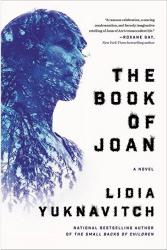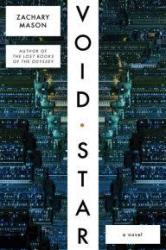

“Cli-Fi,” the latest portmanteau construction with which critics try to corral runaway culture (“postmodern,” e.g.), first turned up in a 2007 tweet. The coinage puts together fiction and climate, implying “climate change,” and it rhymes closely with “sci-fi.” Science fiction, after all, provides earmarks for any narrative that draws on threats like global warming. Such a story must peek into the future and raise questions of humanity’s purpose, its place in the biosphere. Thus a winner of science fiction’s Hugo and Nebula, Paolo Bacigalupi, is the first of the cli-fi authors named in a 2015 Atlantic article. Others mentioned, however, include Margaret Atwood, whose novels are sometimes speculative, sometimes straightforward—and in The Blind Assassin, both at once. The flag-bearer for the movement may be Jeff VanderMeer, whose Southern Reach Trilogy enjoyed success all over the planet while imagining a planet stripped of technology. VanderMeer wrote the ars poetica for cli-fi, “The Slow Apocalypse and Fiction,” a 2015 piece which worried that, when it comes to the endangered ecosystem, “fiction is languishing behind other disciplines.”
The challenge to catch up clearly helped prompt the latest from Lidia Yuknavitch and Zachary Mason. Both Yuknavitch’s The Book of Joan and Mason’s Void Star travel a scorched Earth. Both open wider the wounds to the environment, spilling a lot of blood. Dwindling resources pit the haves against the have-nots, and ancient dangers of club and knife grow worse even as new technologies dazzle and threaten. The upshot is contemporary fiction that deserves a hoary old compliment—you could call these novels “ripping yarns.” You’d never guess both writers are coming off work that questions classic story values.
Mason’s lone previous novel is The Lost Books of the Odyssey, which ten years ago won a small-press award for “Innovative Fiction.” Rather than a plot, Lost Books lays out a crazy quilt of new episodes from Homer’s epic. The text then becomes itself an exciting episode, picked up by a major publisher, but while the same house has brought out Void Star, the editor may have wondered whether its author were an imposter. Mason’s setting has shifted from the ancient Aegean to the California cities of the future. His narrative at once sets three bombs ticking, as his brief chapters alternate among three principals.
Now, roving third person is the perspective for most thrillers, which also tend to feature the posh set. Sure enough, two of Mason’s players qualify: the well-born Brazilian Thales, perhaps still in his teens, and the American “daughter of the upper middle class” Irina, past forty but kept youthful by treatments at “the Mayo.” Irina pays for these with high-level IT jobs, and though Thales has no need to work, he too shows considerable brainpower. Both are rare cases, among the few to survive a chancy new “memory implant.” Indeed, the device has brought them back from the dead, while also affording another form of life-extension; they can pass on their memories, down to the most intimate detail.
This MacGuffin drives the busy multiple plots. The way characters stumble across borders of consciousness recalls Philip K. Dick, but actually William Gibson makes a better comparison. Mason too renders his AI anthropomorphic: “a dozen counter-intrusion systems lock onto her and she wastes a precious fraction of a second disemboweling them.” His cliffhangers rival those of Gibson’s cyberpunk, and his dialogue too has the tang of noir:
“There’s no going back. Is life worth so little that you’re in a hurry to leave it?”
“Life is worth so much that I’m in a hurry to live it.”
Yet while the storyline exerts a powerful tug—only the denouement seems a letdown, spelling things out—it raises a tough question. One wonders: Is this really cli-fi? Granted, the American Midwest is a desert, and kids take spring break up on the Arctic Circle. But these details, like the well-observed indicators of social status, only supply the background for the cat and mouse around the implant. So the third major player, Kern, a street fighter of about twenty, provides essential story ballast.
Kern is a climate refugee, out of the arid south. In the lawless favela of next-century San Fran, his everyday risk and triumph are evident at once, as we encounter him in breakneck flight from roof to roof. The vivid rendering of parkour makes you gasp, and later, when the youngster turns “beserker,” he leaves bruises. Yet the scrappy autodidact proves to have ethics and subtlety to match the rich folk. Altogether, Kern makes a fine unlikely savantfor a ravaged world, as well as for a novel that flirts with being a mere carnival ride.
Lidia Yuknavitch, compared to Mason, wasn’t quite so cavalier about storytelling in her previous work. She too began on edgy small presses, but her move to a mainstream house, with The Small Backs of Children in 2015, served up both war-zone action and wild sex. Still, the text was organized around recurrent images and sampled from alternative forms (a dramatic script, for instance), while also recycling material from her 2011 memoir The Chronology of Water. When she opens her new novel in a space station, it’s a departure in more ways than one.
On top of that, Book of Joan at once develops a familiar sci-fi trope. Its “suborbital complex” is a gated community, in which everyone’s “a member of a former ruling class.” The elite have bought refuge from “the dying clod” below, an Earth turned “lunar landscape,” but as in other speculative fictions, the cost seems to include their humanity. Among the sky-dwellers is the primary narrator, Christine, and she invites sympathy for how she rails against her “fruitless survival.” But then again, she too has “mutated and devolved,” losing her sex organs: “our bodies could no longer manifest our basest desires nor our lofty ideas of a future.” As for the group’s “dictator,” Christine finds him no less than repulsive—and the man sounds awfully familiar. “His is a journey from opportunistic showman, to worshipped celebrity, to billionaire, to fascistic power monger.”
The parallels to our current president raise a warning, another of cli-fi’s dark prophecies. Now and then the novel gets still more direct in attacking today’s realpolitik: “what kind of brutal abomination,” says Christine, “dismisses the suffering of the majority of the world’s population as worth sustaining a tiny number of pinheaded elites.” Nor is hers the only critique. On the planet’s surface a few rebels hang on, men and women wholly intact. Their leader may be a mystic named Joan, whose miracles suggest she’s bonded with nature. Or that’s the rumor; the official story holds that “Joan of Dirt” was burned alive for her insurrection. Nonetheless her legend persists, and down on Earth someone keeps blowing up feeder stations.
The saint-like guerilla is another common sci-fi element, but Joan renders it with ripe sensuality. Yuknavitch is known for her “Corporeal Writing” workshops, and such rhetoric has its risks; not every turn of thought needs to be underscored in body fluids. But a setting this strange benefits from the corporeal. When Christine finds herself under surveillance, she fights the power by pretending to masturbate, and the erotic poignancy, the lack of fulfillment, feels powerfully familiar.
Also, as that incident suggests, the text offers comedy. There’s a pun in the acronym for the space station, “CIEL,” and the narrator’s comrade in arms takes his name from a Shakespearean clown: Trinculo. Indeed this BFF, born gay, provides relief both comic and actual. “Trinc” has an invention that could spur a planetary revival.
Invention in another sense is what most vivifies Book of Joan. Though a “brutal bloodstory,” the narrative nonetheless trots out a jaw-dropping gallimaufry. The imagination, not the rawness or humor, is what’s new to Yuknavitch. Her CIEL society, for instance, relies on its own denatured bodies to indicate status. Skin has become “the new paper [or] Canvas,” and so “the richest” parade around like “a great puffed-up flesh palimpsest.” And this mania goes on to take stranger form! Then when Book Two descends to Earth, with the resilient Joan, matters turn both hardscrabble and psychedelic. When an informant dies before he can talk, our warrior woman deploys powers of resurrection. The Lazarus act pains her, though, and not just because it briefly makes her more dirt than flesh; also she knows the revival won’t last long, and she thinks back to the first time, the refugee children hidden in false graves… By the end of the twinned tales, the incident is hard to match for its mystery, tragedy, and—in spite of the magic—psychological precision. Spellbinding stuff.
Beyond that, Joan’s toying with life and death suggests something about the ultimate appeal of cli-fi. Good art always combines seriousness and play, but this mode surely depends more on seriousness. The planet’s at stake, after all. Therefore in order to tap the anarchic and Dionysiac wellsprings of creation, fiction like this makes fresh demands on what passes for “reality,” within its context. That context must present some new nightmare of human carelessness: a fresh test for just how far men and women might go.
Last summer John Domini brought out his latest book, short stories, MOVIEOLA!






